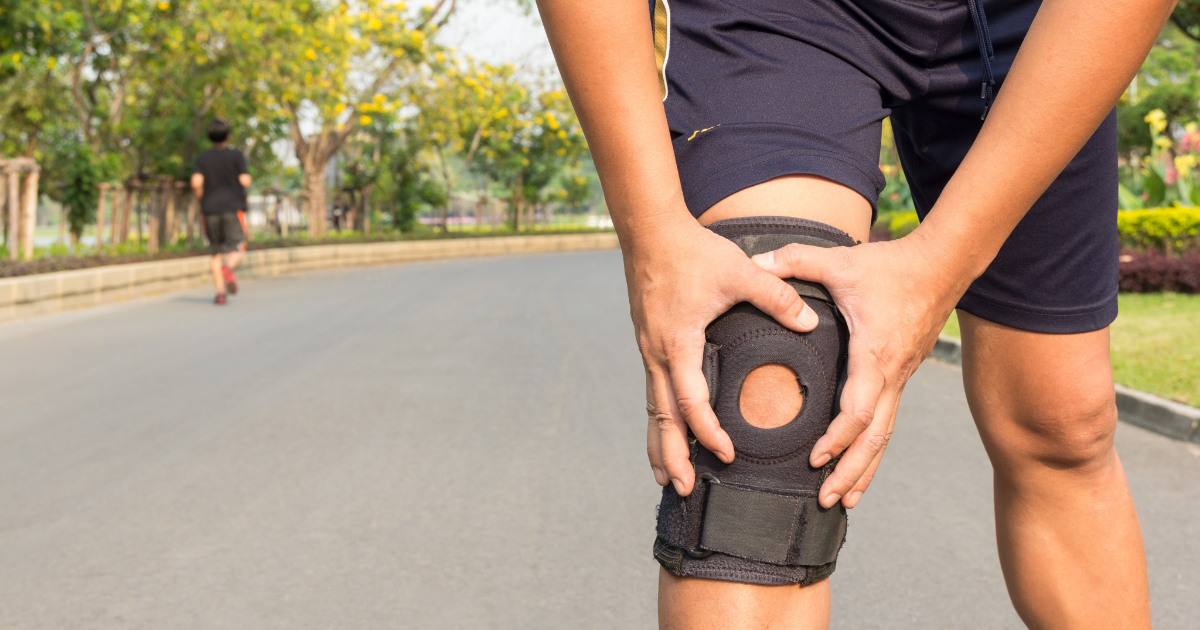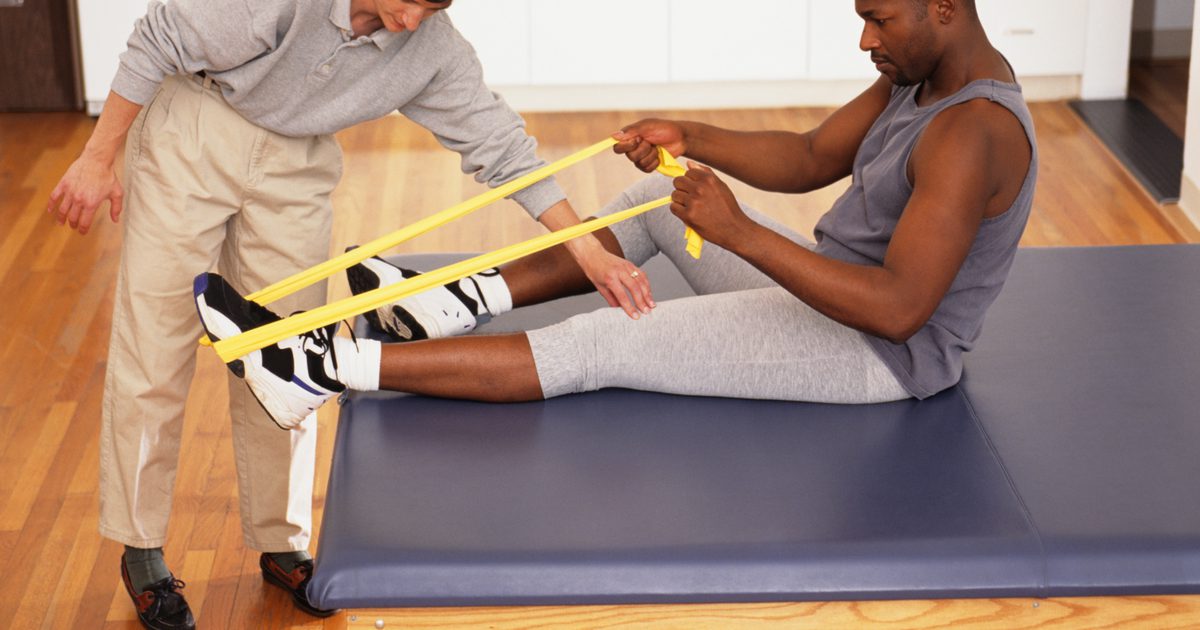How To Treat A Meniscus Tear
A meniscus tear is a knee injury that usually occurs during jarring or rotating movements like a forced twist of the knee or a sudden change of direction while running. The meniscus is the soft cartilage located in the knee joints. This tissue helps stabilize the knee and cushion the area between the thighbone and shinbone. Meniscus tears are common injuries for athletes who play contact sports, but they can happen to anyone during heavy lifting, kneeling, or deep squatting. Individuals over thirty years old and osteoarthritis patients have a higher risk of meniscus tears. Signs of a meniscus tear include pain, swelling, and a popping sensation. Patients should seek immediate medical attention if their knee locks up or if they’re unable to bend it. A meniscus tear can be diagnosed through a physical exam and a variety of imaging tests. Patients can decrease their risk of meniscus tears by doing regular exercises to strengthen leg muscles. Treatment is determined by the type, size, and location of the tear. Get to know the options for treating a meniscus tear now.
Rest And Ice The Knee

Rest and ice the knee after the injury to reduce pain and swelling and promote healing. If the knee is causing pain, patients should rest and limit all activities, including walking. Individuals should also avoid the activity that caused the injury and all movements that could aggravate the damage, such as pivoting, twisting, or rotating the affected knee. If the pain is severe, doctors may recommend crutches. Their use will relieve pressure from the knee by removing any weight bearing on the joint. Applying ice to the knee can also reduce the pain and swelling. Patients should use cold packs or a bag of frozen vegetables instead of applying the ice directly to the skin. Individuals can place ice cubes in a washrag or towel for the same effect. Ice the affected area for about fifteen to thirty minutes every three to four hours for a few days after the injury. Continue this treatment as often as needed until the pain and swelling subside.
Learn more about treating a meniscus tear now.
Wear A Compression Sleeve

Wearing a compression sleeve or brace may help patients stay active while recovering from a meniscus tear by providing some stability, increasing circulation, and preventing hyperextension. Physical therapy is typically recommended for healing after the initial swelling goes away. The exercises are necessary to regain range of motion and strength in the knee and thigh area. Wearing a compression sleeve can help stabilize the joint and prevent patients from overextending the knee and aggravating the injury during physical therapy. Stabilizing the joint can also prevent damage to surrounding muscles or joints that may occur due to them overcompensating for the damaged joint. A compression sleeve increases circulation to the affected area, which hastens recovery by delivering more oxygen and nutrients and reducing soreness in the muscles. A compression sleeve can also relieve pain by reducing the pressure and weight of the area right above the affected meniscus.
Get the details on the next method of treating a meniscus tear now.
Engage In Stretching And Strengthening Exercises

Individuals with a meniscus tear should engage in stretching and strengthening exercises to regain range of motion and control. Doctors may recommend physical therapy as a conservative treatment for a meniscus tear, especially if the meniscus tore because of wear and tear or osteoarthritis. Stretching and strengthening exercises can help rehabilitate the affected knee back to full health. These exercises also ease the stress on the patient's knee during recovery by eventually helping stabilize and support the knee joint. They may be recommended instead of surgery or in addition to surgery to strengthen the muscles around the knee. Patients may do these exercises at home or with the assistance of a physical therapist. A rehabilitation plan usually starts with exercises to improve range of motion and progresses to strengthening exercises. It takes about three months of these exercises to repair a meniscus tear. Physical therapy performed after the surgical repair of a meniscus tear typically lasts approximately three to six weeks.
Continue to discover more treatments for a meniscus tear.
Elevate The Affected Knee

Elevation is a part of the RICE method of treatment and involves elevating the affected body part above heart level to help reduce swelling. Raising the knee above heart level can also reduce pain and internal bleeding that could lead to bruising. Individuals can elevate their affected knee by reclining when they rest and placing pillows or cushions under their heel to prop up their leg. Experts recommend keeping the affected knee raised as much as possible while sitting or reclining to reduce swelling. Of course, patients should seek medical attention if the swelling or pain persists or gets worse.
Learn more about how to treat a meniscus tear now.
Surgical Repair

Doctors may recommend surgical repair if the patient's knee doesn’t respond to more conservative treatments or if the meniscus tear causes their knee to lock up. The type of surgery recommended will depend on the kind of tear and its size and location within the cartilage. The meniscus can be repaired by stitching the pieces back together, or the damaged meniscus can be trimmed away if the tear can’t be repaired. The surgical procedure most commonly used to repair a torn meniscus is performed with arthroscopy. This technique uses a flexible fiber-optic device called an arthroscope to view the damage and make necessary repairs. The device has a camera and small light attached to it, and it’s inserted into the knee through a tiny incision made near the knee. Surgical instruments for the operation can be maneuvered through the arthroscope or additional incisions. The entire procedure takes about an hour. Patients may be fitted for crutches well in advance of the surgery to learn how to use them. Full recovery can take up to six weeks, but patients can start physical therapy within days.
Learn more about treating a meniscus tear now.
Pain Relief Medication

Pain relief medication is one of the ways to treat pain and discomfort caused by a torn meniscus. Patients shouldn't need medication stronger than over-the-counter options at the pharmacy. The first line of treatment is with nonsteroidal anti-inflammatory drugs, which block the inflammatory process in the body, reducing inflammation and swelling and pain due to the meniscus tear. Ibuprofen and acetylsalicylic acid are two of the most commonly-used NSAIDs to treat torn meniscus pain. While side effects tend to be mild, this kind of medication can cause nausea, vomiting, diarrhea, constipation, appetite reduction, dizziness, headaches, rashes, and general drowsiness. Because of the effects of NSAIDs on the kidneys, there may be increased fluid retention, which can cause general swelling in the legs and arms. Some may increase blood pressure. In addition, individuals should make sure these medications don't interact with any others they're taking.
Continue reading to discover more treatment options for a meniscus tear now.
Avoid High Impact Activities

One way to avoid a meniscus tear or promote continued healing after recovery is to avoid high impact activities. While high impact exercise is favored by some athletes for overall body strengthening, it's more likely to lead to injury in the legs and hips, especially if individuals aren't used to these activities. Some common high impact activities are contact sports, jumping jacks, running, jumping rope, some cardio dance routines, and step aerobics involving jumping or running. Those dealing with a meniscus tear can still continue exercising after the appropriate amount of time has passed by engaging in low impact activities like the elliptical machine, biking, swimming, rollerblading, hiking, and walking.
Get more details on methods of treating meniscus tears now.
Warm Up And Rest Between Workouts

A common injury prevention tactic is to warm up and rest between workouts. A warm-up is a short exercise session for individuals to loosen their muscles before doing the bulk of their workout. During a warm-up, they'll typically stretch and do mild cardio activities. The cardio exercises help get an individual's blood flowing and increase circulation before the more intense workout. Stretching helps to relieve tension and 'knots' in the muscles. If an individual's muscles are too tense prior to a workout, they're more likely to tear or suffer other injuries. It's also important to rest between workouts. Between each set of exercises, individuals should take a minute or two to breathe and let their body relax. In addition, unless they're used to doing multiple hours of intense exercise each day, individuals should try to alternate the types of workouts they do each day so different muscle groups have a chance to rest.
Learn more about treating a meniscus tear effectively now.
Wear Supportive Shoes

Wearing supportive shoes is a good way to minimize knee pain and help reduce the risk of injuries such as a meniscus tear. Whether an individual is trying to prevent a meniscus tear or recover from one, good shoe support will make a difference. Before looking for a shoe, individuals should be aware of their lifestyle-related needs. There are running shoes, casual shoes, and shoes designed for those who stand all day. A supportive shoe will use cushioning, different elevation levels, and general design to provide more support than bare feet. It's best to avoid 'barefoot shoes,' which are designed with minimal support. Individuals should also avoid high heels, which are bad for the knees and hips, and clogs, which put pressure on the knees. Be careful of shoes with too much support, as they may impair the foot's natural movement, which impedes knee support.
Discover more effective ways to treat a meniscus tear now.
Make Workout Changes Gradually

When individuals have an injury or other condition that causes pain, such as a meniscus tear, exercise can sometimes aggravate it. Meniscus tears can recur and get worse if individuals exercise too heavily during their recovery. Even if individuals don't have known knee problems, making workout changes gradually is one of the easiest ways to prevent injuries. Muscles build up slowly over time, and the body needs a chance to get used to workout intensities. If individuals suddenly push little-used muscles beyond their limit, there's a higher risk of injury. Rather than shocking their body with sudden workout intensity, individuals should try adding additional reps, increasing the challenge level, or adding new exercises to their existing routine.